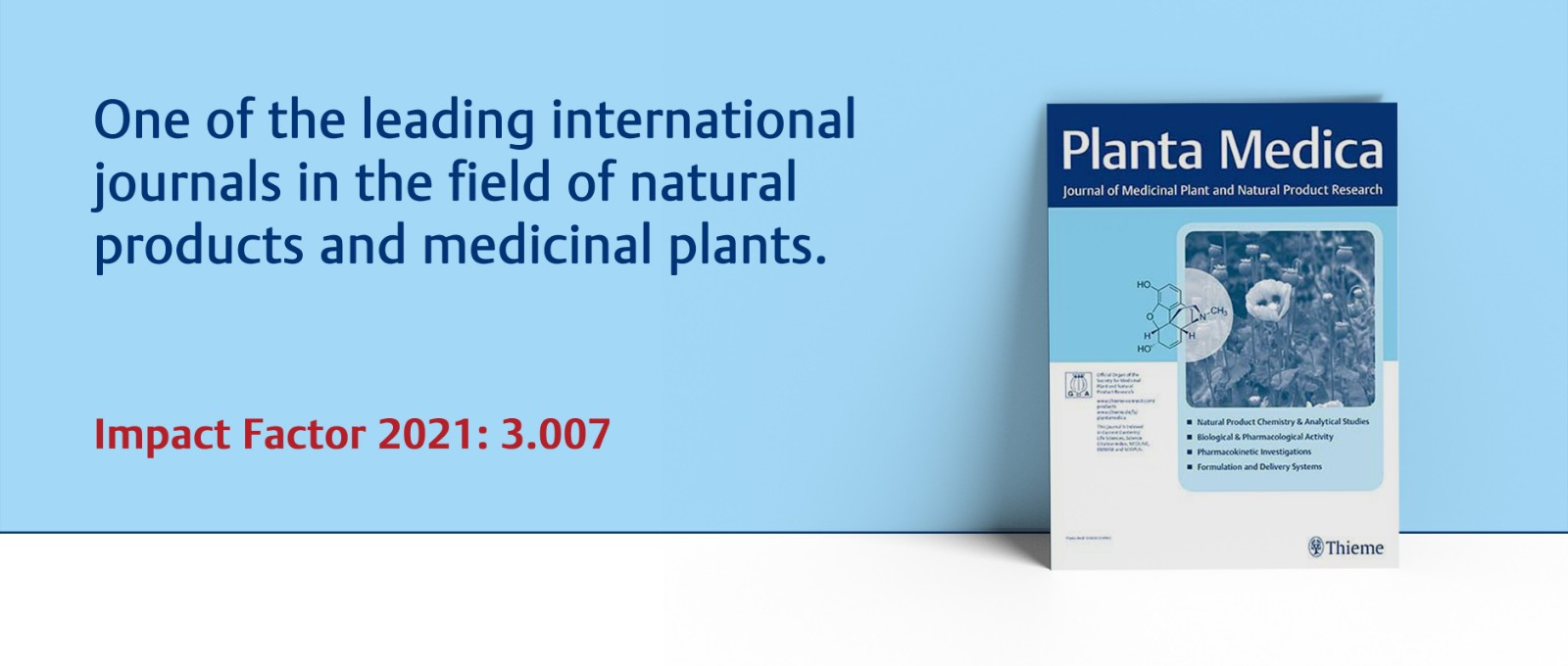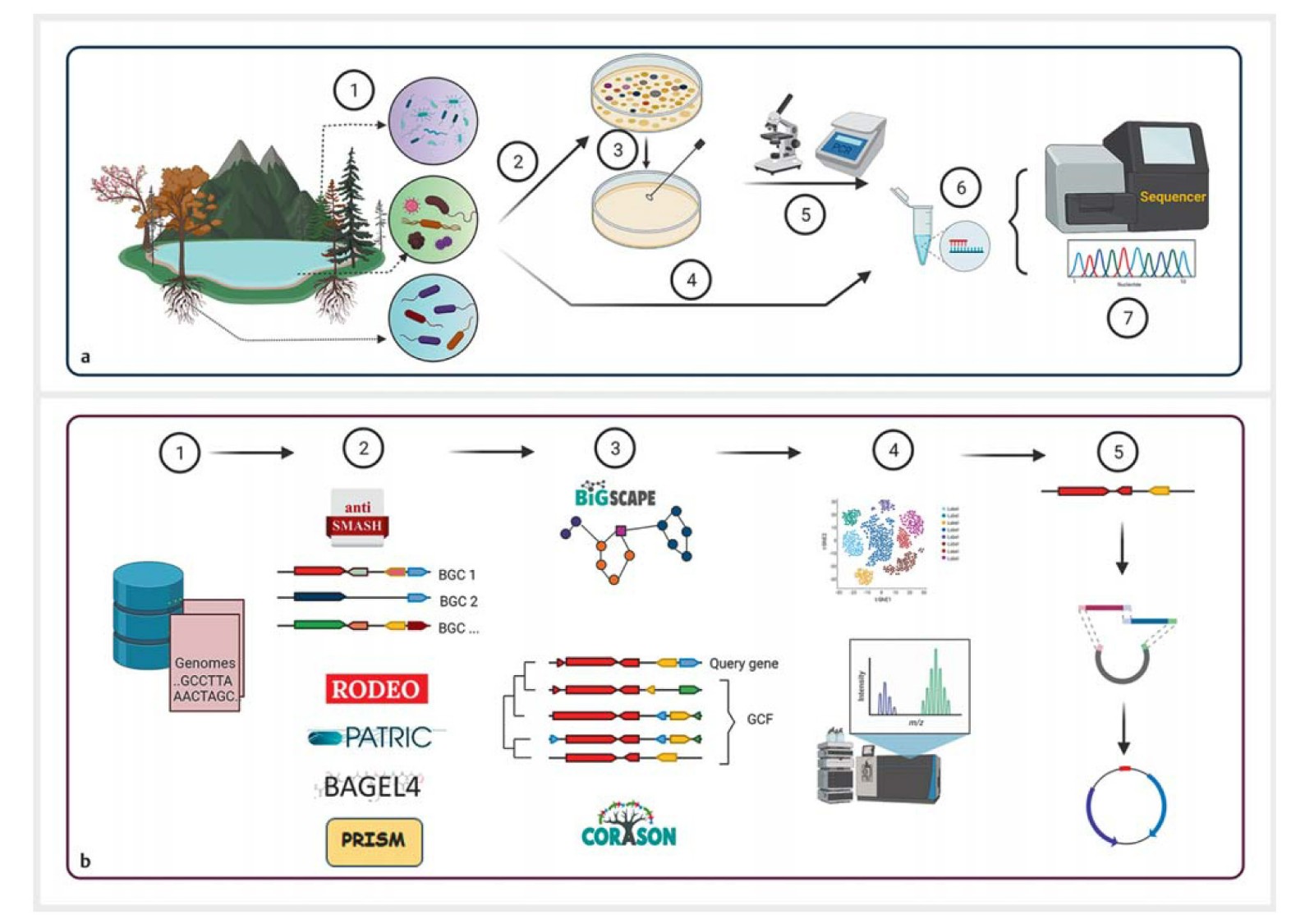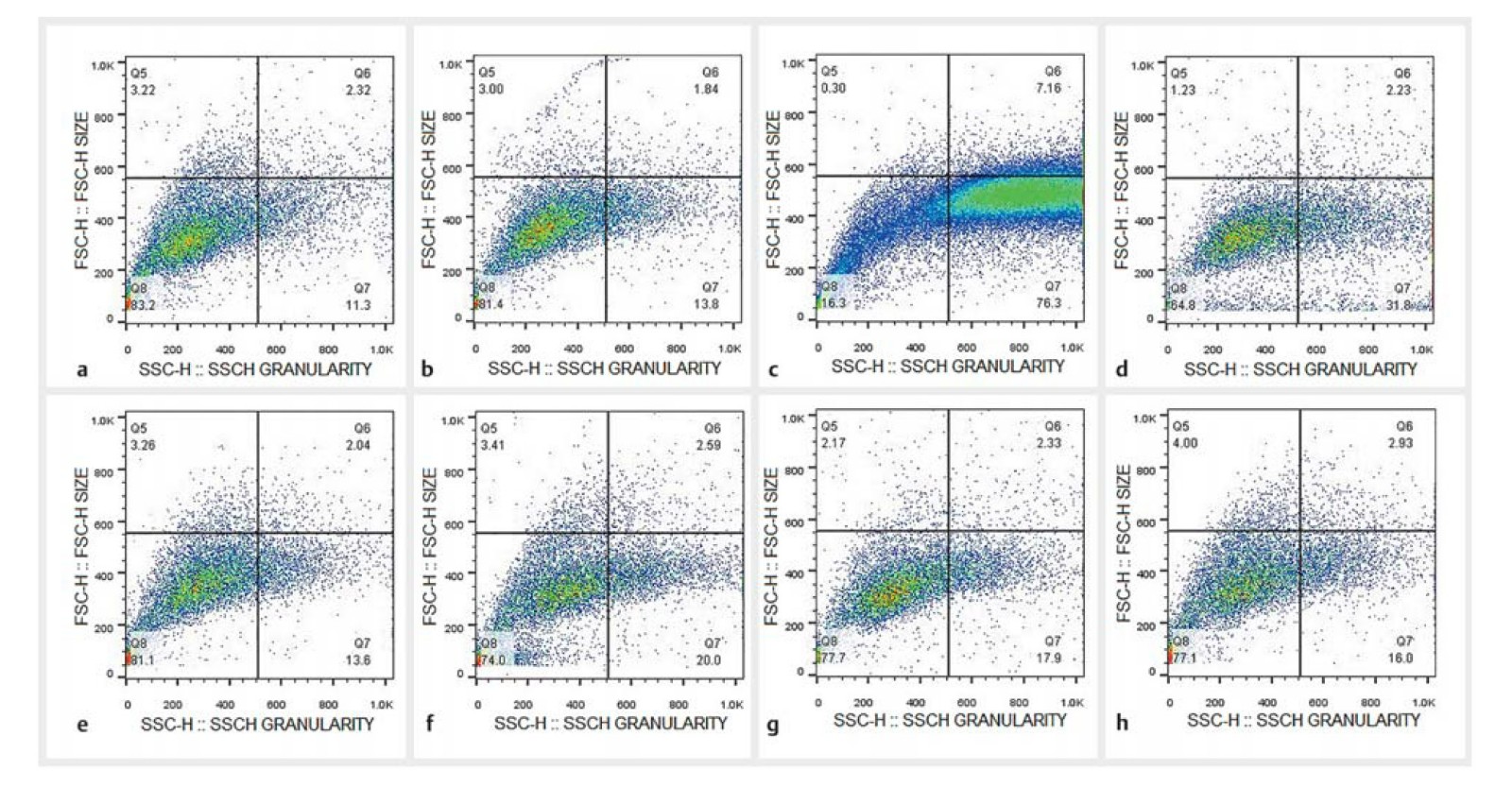

▼
天然药物研究期刊Planta Medica最新一期全新上线,欢迎免费阅读本期主编精选论文。
几十年来,我们一直面临着对新抗生素治疗的迫切需求。药物发现对于探索来自植物和微生物的新抗生素世界至关重要。Rivera-Chávez等人的这篇综述详细分析了所有现代方法包括基因组挖掘、OMICs研究和 CRISPR-CAS 技术的机会和相关限制。对于药物发现领域的任何人来说,这篇综述都是理解未来研究领域的必要文献。
Tabernaemontana物种的植物具有包括抗菌作用在内的多种药理学特性。Ibogaines是一种有趣的色胺生物碱,主要以其精神药物活性而闻名。但它们独特的结构为开发抗溶组织内阿米巴的药物提供了有趣的基础。Carrero等人的报告,首次展示了伊博加因生物碱在抗原生动物药物研究领域的潜在新故事。
Issue 09/10 · Volume 88 · August 2022
Rivera-Chávez J et al.
The discovery of novel antimicrobials has significantly slowed down over the last three decades. At the same time, humans rely increasingly on antimicrobials because of the progressive antimicrobial resistance in medical practices, human communities, and the environment. Data mining is currently considered a promising option in the discovery of new antibiotics. Some of the advantages of data mining are the ability to predict chemical structures from sequence data, anticipation of the presence of novel metabolites, the understanding of gene evolution, and the corroboration of data from multiple omics technologies. This review analyzes the state-of-the-art for data mining in the fields of bacteria, fungi, and plant genomic data, as well as metabologenomics. It also summarizes some of the most recent research accomplishments in the field, all pinpointing to innovation through uncovering and implementing the next generation of antimicrobials.

Carrero JC et al.
Plants of Tabernaemontana species have several pharmacological activities including antimicrobial effects. Amoebiasis continues to be a public health problem, with increasing evidence of resistance to metronidazole. In this study, we assessed the effect of the alkaloid fraction of T. arborea root bark and the alkaloids ibogaine and voacangine on the viability and infectivity of Entamoeba histolytica trophozoites. Cultures were exposed to 0.1 – 10 µg/mL for 24, 48 and 72 h, and viability was then determined using a tetrazolium dye reduction assay and type of cellular death analyzed by flow cytometry. Results showed that the alkaloid fraction, but mainly ibogaine and voacangine alkaloids, exhibited potent dose-dependent anti-amoebic activity at 24 h post-exposure (IC50 4.5 and 8.1 µM, respectively), comparable to metronidazole (IC50 6.8 µM). However, the effect decreased after 48 and 72 h of exposure to concentrations below 10 µg/mL, suggesting that the alkaloids probably were catabolized to less active derivatives by the trophozoites. The treatment of trophozoites with the IC50 s for 24 h induced significant morphological changes in the trophozoites, slight increase in granularity, and death by apoptonecrosis. The capacity of T. arborea alkaloids to inhibit the development of amoebic liver abscesses in hamsters was evaluated. Results showed that even when the treatments reduced the number of amoebic trophozoites in tissue sections of livers, they were unable to limit the formation of abscesses, suggesting their rapid processing to inactive metabolites. This work leaves open the possibility of using Tabernaemontana alkaloids as a new alternative for amoebiasis control.

